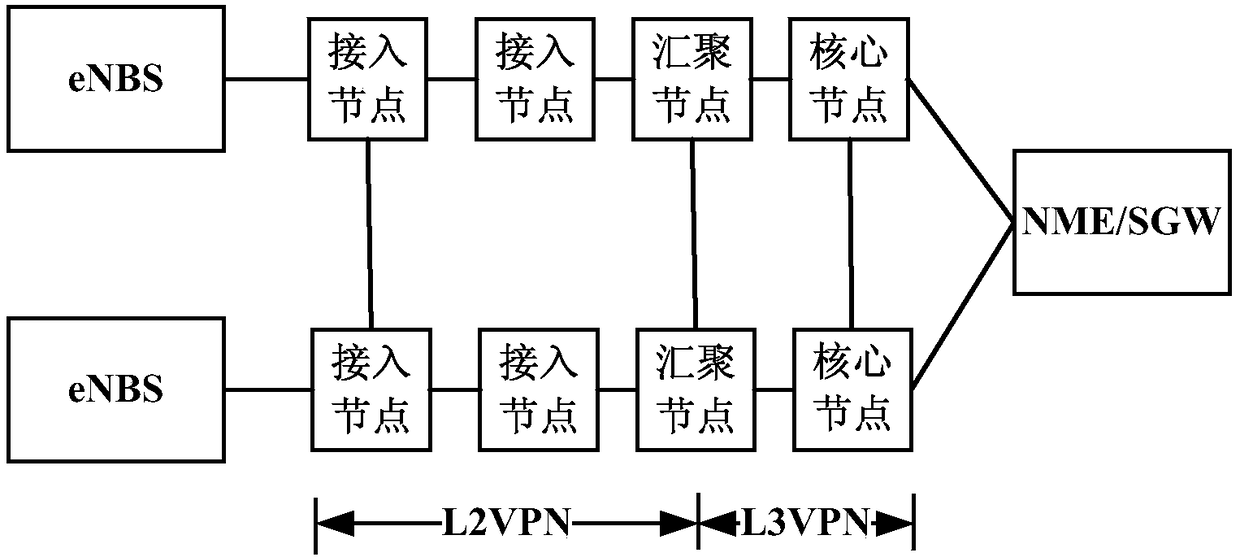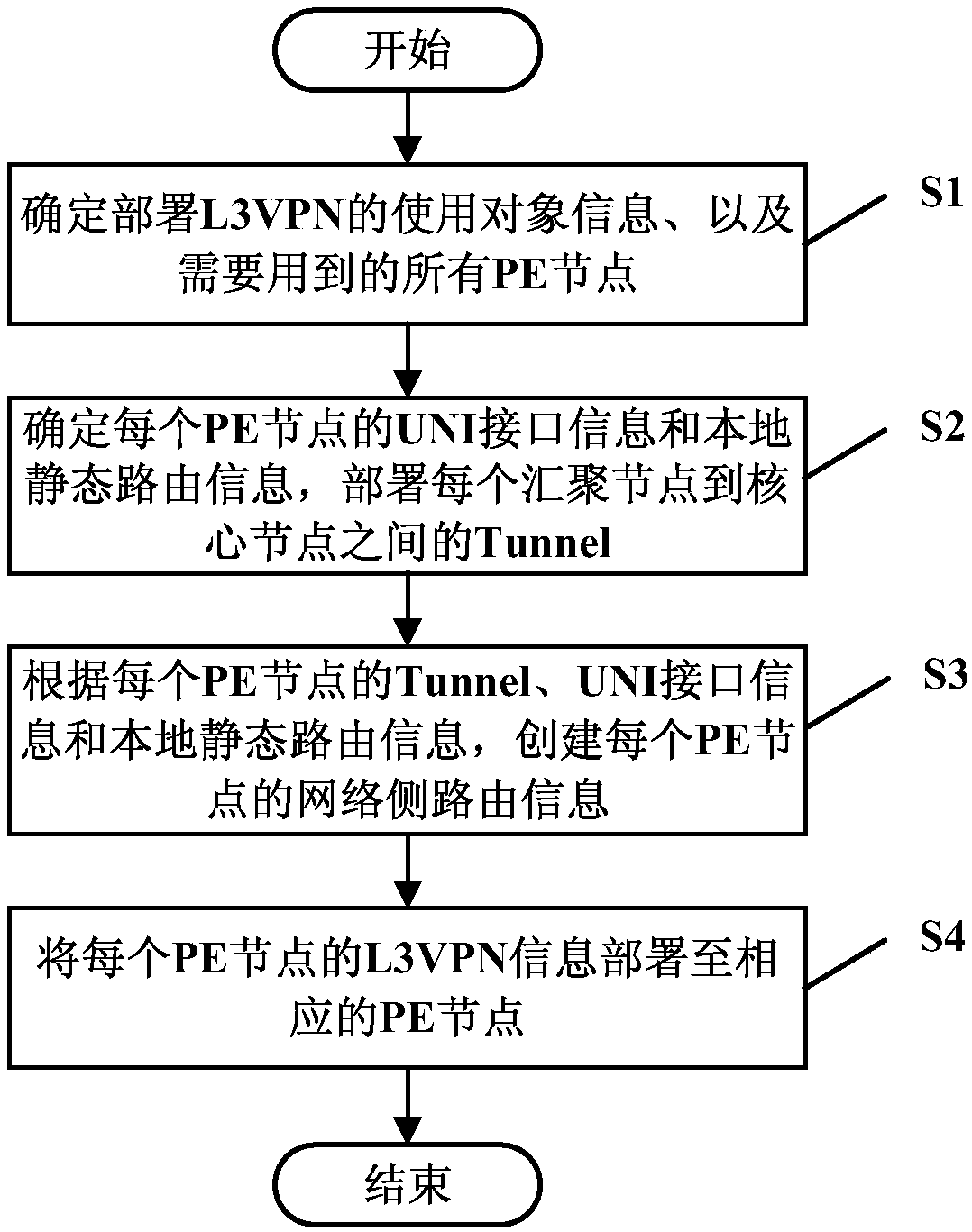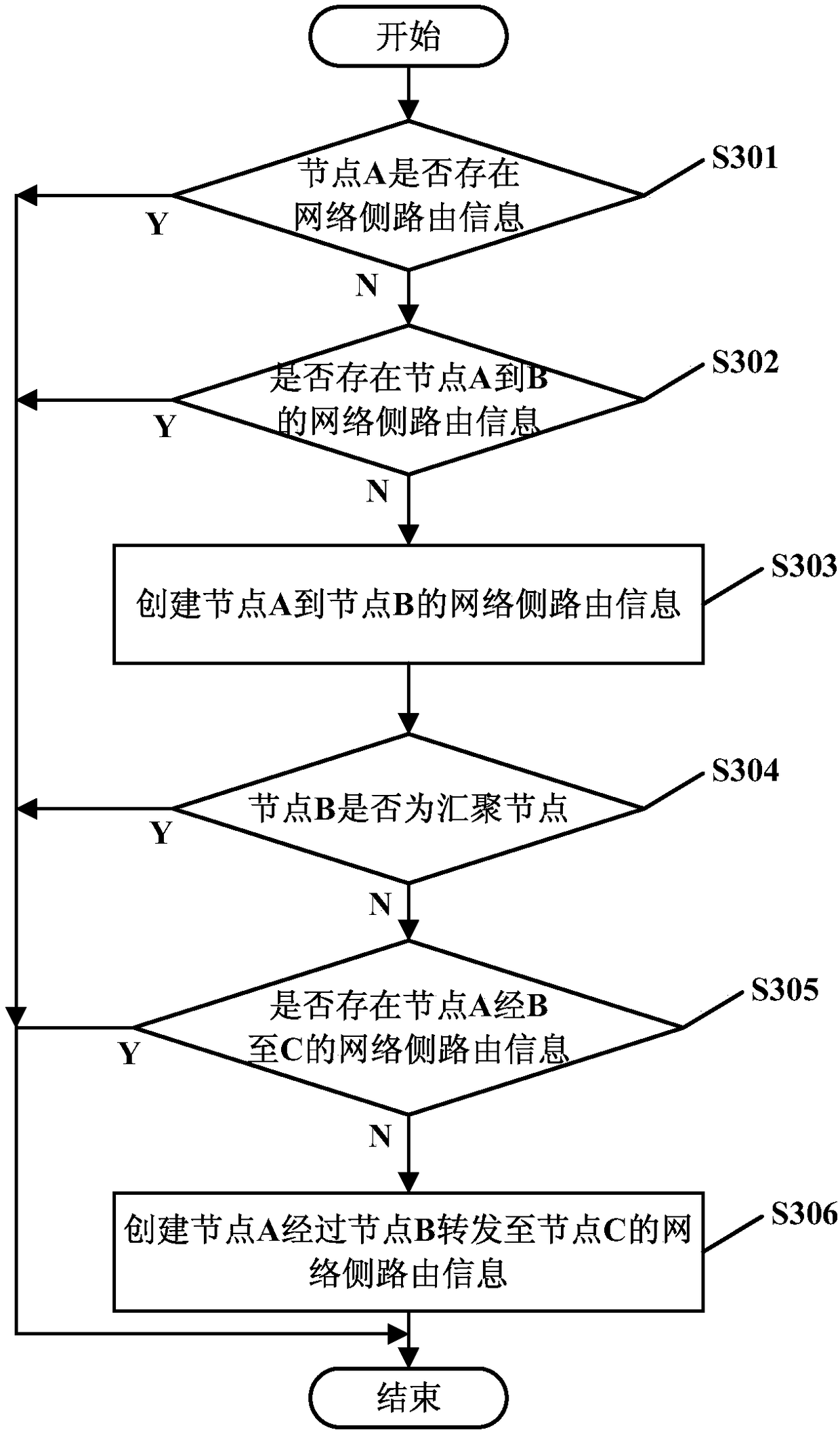Method and system for deploying L3VPN (Layer 3 Virtual Private Network) in LTE (Long Term Evolution) mobile backhaul network
A backhaul network, network-side technology, applied in the field of L3VPN deployment, can solve problems such as poor flexibility, inability to change, and reduced network scalability
- Summary
- Abstract
- Description
- Claims
- Application Information
AI Technical Summary
Problems solved by technology
Method used
Image
Examples
Embodiment 1
[0089] The UNI interface information of the PE node in S2 includes: the UNI interface (User Network Interface, user network interface) of the PE node, the IP address and mask of the UNI interface, and the VPN Label (VPN label) of the PE node. The VPN Label can be automatically assigned or specify manually.
[0090] The local static route information of the PE node in S2 includes: the destination IP address and mask, the UNI interface output by the local static route, and the next-hop address of the local static route.
Embodiment 2
[0092] On the basis of Embodiment 1, the process of creating the network-side routing information of each PE node in S3 includes: defining the PE node that needs to create a network-side route as node A, and node A is a convergence node; according to the tunnel of node A, determine The peer node B of node A, and node B is the core node; according to the tunnel of node B, determine the peer node C of node B, and node C is the aggregation node; in L3VPN, only one jump occurs (that is, aggregation Node A to core node B, core node B to sink node C), so there are no other peer nodes after node C.
[0093] At this time, the network-side routing information of node A includes the network-side routing information from node A to node B, and the network-side routing information forwarded by node A to node C through node B;
[0094] The network-side routing information from node A to node B includes:
[0095]Purpose IP and mask, purpose IP and mask are: the IP address and mask of the UN...
Embodiment 3
[0105] On the basis of Embodiment 2, after the creation of the network-side routing information of the PE node described in S3 (the network-side routing information forwarded by node A to node C via node B), the following steps are also included: when node A passes through node B When the destination IP of the network-side routing information forwarded by B to node C belongs to the same network segment as the destination IP of the local static routing information of node A, it proves that node C and node A have a master-backup relationship. The route of A is diffused to node C, that is, the network-side routing information forwarded by node A to node C through node B is deleted.
PUM
 Login to View More
Login to View More Abstract
Description
Claims
Application Information
 Login to View More
Login to View More - R&D
- Intellectual Property
- Life Sciences
- Materials
- Tech Scout
- Unparalleled Data Quality
- Higher Quality Content
- 60% Fewer Hallucinations
Browse by: Latest US Patents, China's latest patents, Technical Efficacy Thesaurus, Application Domain, Technology Topic, Popular Technical Reports.
© 2025 PatSnap. All rights reserved.Legal|Privacy policy|Modern Slavery Act Transparency Statement|Sitemap|About US| Contact US: help@patsnap.com



